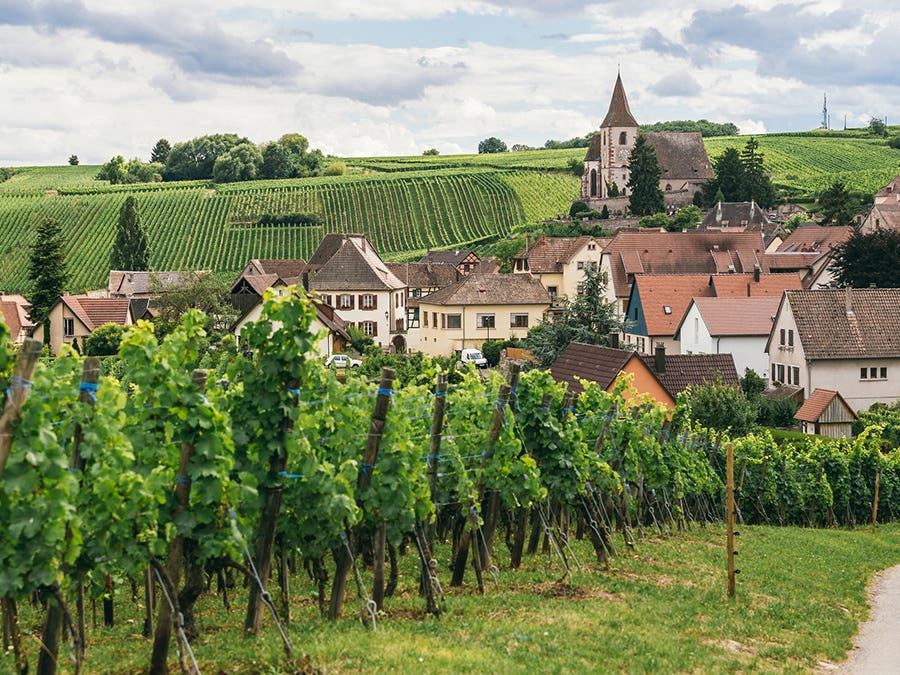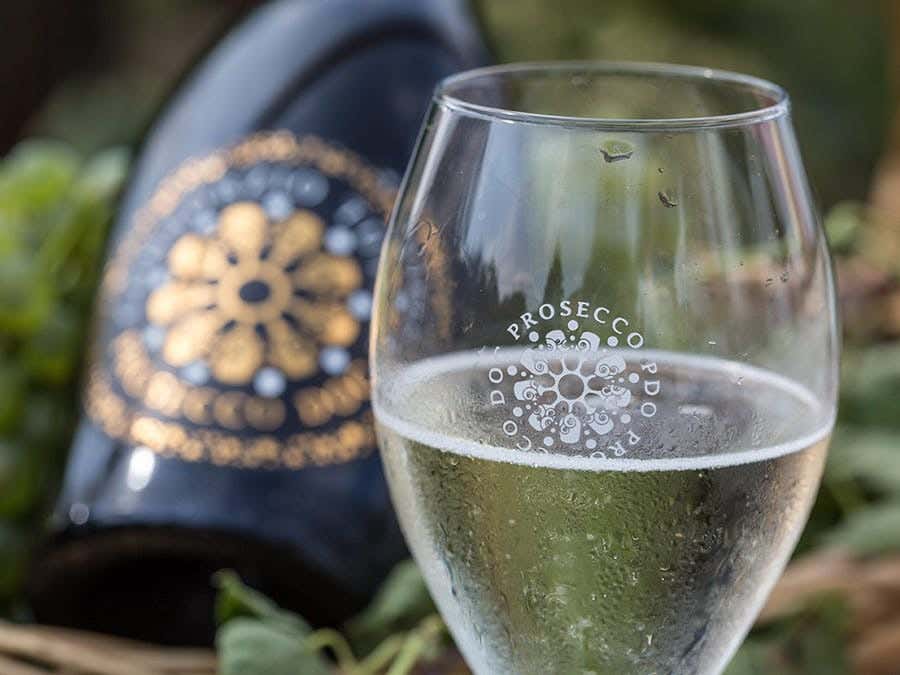While both its countryside and its white wines are widely admired, Alsace—whose vineyards are the most northerly in France after the Champagne region—is not an easy region to grasp. Have you ever tried to figure out all the information provided on one of those narrow Alsatian wine bottles? The variety, the estate, the vineyard, the harvest classification… It’s easy to feel lost, especially if you’re not familiar with Germanic terminology.
Despite the difficulty, enthusiasm for Alsatian wine is on the rise, its high quality and distinctive character seducing an increasing number of wine lovers.
To begin learning about the region, where should you start?
The wine-producing region of Alsace extends from the German border in the north to the outskirts of the city of Mulhouse in the south. While this strip of land at the foot of the Vosges Mountains is only about 68 miles long, it contains a surprisingly diverse array of soil types. At the heart of this patchwork of vineyards are parcels of land that traditionally have produced the best grapes, which are known as the Grands Crus.
Although these Grands Crus represent only 4 percent of the region’s production, these are the vintages that most clearly show the strong influence of terroir on Alsatian wine. Soils range from granite to shale to volcanic, with each type producing very different results in the glass.
Grands Crus must conform to quality standards such as strict terroir boundary lines, lower yields, specific rules regarding vine management and a minimum degree of grape ripeness. Except for the Zotzenberg Grand Cru (which was allowed to use Sylvaner grapes on March 21, 2005), all the Alsatian Grand Cru AOCs must create their wines from the noble Alsace varieties: Pinot Gris, Muscat, Gewurztraminer, and Riesling.
Nevertheless, these varieties produce very singular-tasting wines depending on the specific soil found in the 51 Grand Cru vineyards.
Alain Bélanger, an experienced sommelier and Alsatian wine aficionado, says of the many personalities of Alsatian Grands Crus: “Honestly, I think the charm of Alsatian wine lies in the huge variety of soils and vineyards in the region. This diversity enables the creation of distinguished wines that express the subtle characteristics of their terroirs.”
At the table
Incredibly diverse, Alsace wine range from elegant and taut Rieslings, perfect for serving with fish and shellfish, to aromatic Pinot Gris and Gewurztraminers, ideal pairings for Asian dishes. For those with a sweet tooth, Vendages Tardives and Sélection de Grains Nobles add a surprising diminish to crème brûlées, fruit tarts, and vanilla desserts.
Related Posts
-
Read more
SAQ shelves are lined with more than 300 wines and spirits produced abroad and bottled here, a process that has a positive impact on the environment and workforce in the province.
-
Read more
In recent years, Prosecco DOC (Denominazione Di Origine Controllata) sales have dizzying new heights. Read on to learn more about the accessible bubbles adored the world over.
-
Read more
Bubbly’s rising popularity has resulted in a wide variety of bottles to choose from. Here’s a handy guide to finding the one that’s right for you!
 Access to SAQ Inspire personalized services and store inventories are unavailable at the moment.
Access to SAQ Inspire personalized services and store inventories are unavailable at the moment. Free in-store delivery with purchases of $75+ in an estimated 3 to 5 business days.
Free in-store delivery with purchases of $75+ in an estimated 3 to 5 business days. 













